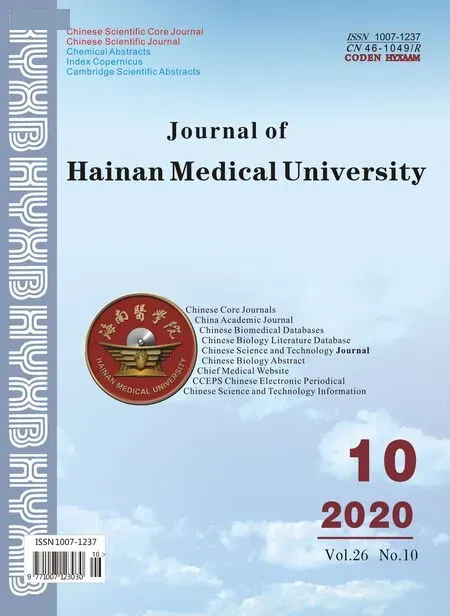Network pharmacological study of Qingfei Paidu Decoction intervening on cytokine storm mechanism of COVID-19
2020-07-23MengQiZhouLuPingYangHaoJieMaCuiCuiChengYuXinZhangJinKunZhangCongGaiHongMeiSun
Meng-Qi Zhou, Lu-Ping Yang, Hao-Jie Ma, Cui-Cui Cheng, Yu-Xin Zhang, Jin-Kun Zhang, Cong Gai, Hong-Mei Sun
Department of Anatomy, Beijing University of Chinese Medicine, Beijing, 102488, China
Keywords:
ABSTRACT
1. Introduction
Since December 2019, novel coronavirus (2019-ncov) has wreathed havoc in the world, causing huge casualties. The world health organization has named the disease caused by 2019-ncov "COVID 19". Severe cases can rapidly progress to acute respiratory distress syndrome (ARDS), septic shock, refractory metabolic acidosis and multiple organ dysfunction (MODS)[1].
Cytokine storm, also known as cytokine release syndrome, is an excessive immune response produced by the body to external stimuli. The cause of cytokine storm is the disorder of the body's immune response. Clinical studies have shown that cytokine storms are commonly present in severely infected patients, which can cause diffuse damage to pulmonary capillary endothelial cells and alveolar epithelial cells, which can lead to the death of ARDS and MODS. Cytokine storm is an important manifestation of clinical critical illness[2-4]. A retrospective study of 41 COVID-19 patients admitted by HUANG C et al. Found that the sudden increase in the condition of the infected person was closely related to the cytokine storm. The levels of IL-1β, IFN-γ, MCP-1 and other inflammatory factors in patients' serum increased, and the initial plasma IL1B, IL1RA, IL-7, IL-8, IL-9, IL-10 in ICU patients and non-ICU patients, The concentrations of basic FGF, GCSF, GMCSF, IFNγ, IP10, MCP1, MIP1A, MIP1B, PDGF, TNF-α and VEGF were higher than those of healthy adults[5].
CHEN N et al. analyzed 99 confirmed cases of covid-19 and proposed that viral particles spread through respiratory mucosa and infect other cells, induce cytokine storms in the body, generate a series of immune responses, and cause changes in peripheral white blood cells and immune cells (such as lymphocytes)[6]. Therefore, inhibiting the production of cytokine storm is essential for the treatment of COVID-19.
Qingfei Paidou Decoction (QFPDT) is recommended by the National Health Commission and the State Administration of Traditional Chinese Medicine for the treatment of COVID-19[7]. The classic prescriptions for diseases (Maxing Shigan Decoction, Shegan Mahuang Decoction, Xiao Chaihu Decoction, Wuling Powder) are made by addition and subtraction, and they contain 21 Chinese medicines with a mild sexual taste. It has the functions of promoting the lung, relieving cough, removing dampness and detoxification, strengthening the spleen and strengthening the body [8-10]. According to the official WeChat report of the State Administration of Traditional Chinese Medicine, Shanxi, Hebei, Heilongjiang, and Shaanxi provinces have piloted QFPDT to treat patients with COVID-19. From January 27, 2020 to February 5, 2020, 4 provinces used QFPDT to treat 214 confirmed cases, with a total effective rate of more than 90%, of which more than 60% of patients had significant improvement in symptoms and imaging performance, 30% The patient's symptoms are stable and not worse[11]. Wang Raoqiong et al. Conducted a clinical observation on 98 cases of new coronary pneumonia patients treated with QFPDT in Sichuan Province. The total effective rate after 9 days of treatment was 92.09%, and with the extension of the treatment time, the total effective rate and recovery rate were increasing. The results and CT images also improved significantly[12]. Among the 98 patients, none of the light and common type patients turned to heavy or critical type, and there are no death cases. Clinical data has verified the good efficacy of QFPDT, but its mechanism of treatment for COVID-19 is still unclear. Whether its efficacy is related to the intervention of cytokine storm needs to be explored. Based on this, this article uses network pharmacology to screen the effective components of QFPDT for COVID-19 and the key targets related to inflammation. Through GO enrichment and KEGG pathway enrichment analysis, try to explore the possible mechanism of QFPDT treatment of COVID-19 from the perspective of cytokine storm.
2.Materials and methods
2.1 Database and software
Tcmsp: platform for pharmacology analysis of traditional Chinese medicine system (http://tcmspw.com/tcmsp.php), Symmap database (https://www.symmap.org), UniProt: a global protein resource database (http://www.uniprot.org/), Genecards database (https://www.genecards.org/), NCBI: National Biotechnology Information Center Database (https://www.ncbi.nlm.nih.gov), Ensembl genome database (http://www.ensembl.org/index.html), String: protein interaction database (https://string-db.org), DAVID6.8: annotate, visualize, and integrate discovery databases(https://david.ncifcrf.gov), Omicshare cloud platform (http://www.omicshare. com), Cytoscape 3.7.2
2.2 Method
2.2.1Collection of QFPDT active ingredients and targets
Retrieving all the chemical components in TCMSP using the 20 Chinese herbs (except gypsum) in Qingfei Paidu Decoction as keywords, and the effective components of 20 kinds of traditional Chinese medicine were obtained by screening under the condition of ADME (pharmacokinetics): bioavailability (OB) ≥ 30%, drug like (DL) ≥ 0.18. Then, Symmap database was used to screen the corresponding targets of these active ingredients, UniProt was used to remove the names of non-human target genes, and drug component target related data was integrated.
2.2.2 Collection of COVID-19 related targets
In the GeneCards database, use "Novel coronavirus pneumonia" as a key word to search for targets related to new coronary pneumonia.
2.2.3 Prediction of potential targets of COVID-19 treated by QFPDT
Using the venn map software in omicshare cloud platform, the drugs selected in 1.2.1 and 1.2.2 were mapped with disease targets, and the potential targets of QFPDT for COVID-19 treatment were obtained.
2.2.4 Construction of PPI network and selection of core components and targets
The potential targets of QFPDT in the treatment of COVID-19 in 1.2.3 were imported into the STRING database to obtain the protein interaction relationship. The information of "node1 and node2" is imported into cytoscape-3.7.2, and its plug-in "network analyze" is used to analyze network topology parameters. At the same time, integrate the information of traditional Chinese medicineingredient-targets obtained from 1.2.1 and 1.2.3, and use Cytoscape-3.7.2 software to construct a drug-active ingredient-target network. "Network Analyze" was used to Analyze Network topology parameters, and the core targets and components were screened out based on the node degree value exceeding the average value.
2.2.5 GO enrichment analysis
Enter the obtained potential target of QFPDT treatment COVID-19 into the NCBI database to obtain the Gene ID of the target, and then convert it into the Ensembl Gene ID through the Ensembl genome database, and import it into the OmicShare cloud platform for GO enrichment analysis. Under the condition of P <0.01, FDR <0.01, screen GO biological process (BP), molecular function (MF) and cell composition (CC) related to inflammation, and draw the screening results into Advanced bubble chart.
2.2.6 Enrichment analysis of KEGG pathway
The obtained potential target of QFPDT treatment COVID-19 was input into DAVID6.8 for KEGG pathway enrichment analysis. Under the condition of P <0.01, FDR <0.01, screen the KEGG pathway related to inflammation.
3. Results
3.1 Prediction of potential targets of QFPDT for COVID-19
Using the TCMSP database, under the condition of "OB≥30%, DL≥0.18", a total of 213 active compounds of 20 flavored traditional Chinese medicines (except raw gypsum) were screened, and a total of 261 predicted targets were screened. A total of 259 COVID-19 targets were obtained from GeneCards database. The venn diagram software was used to intersect the target regulated by the active ingredient of QFPDT with the relevant target of COVID-19, and 52 potential targets of QFPDT treatment for COVID-19 were obtained, as shown in Figure 1. The number of active ingredients corresponding to 52 potential targets, and the traditional Chinese medicine where the active ingredients are located are shown in Table 1.
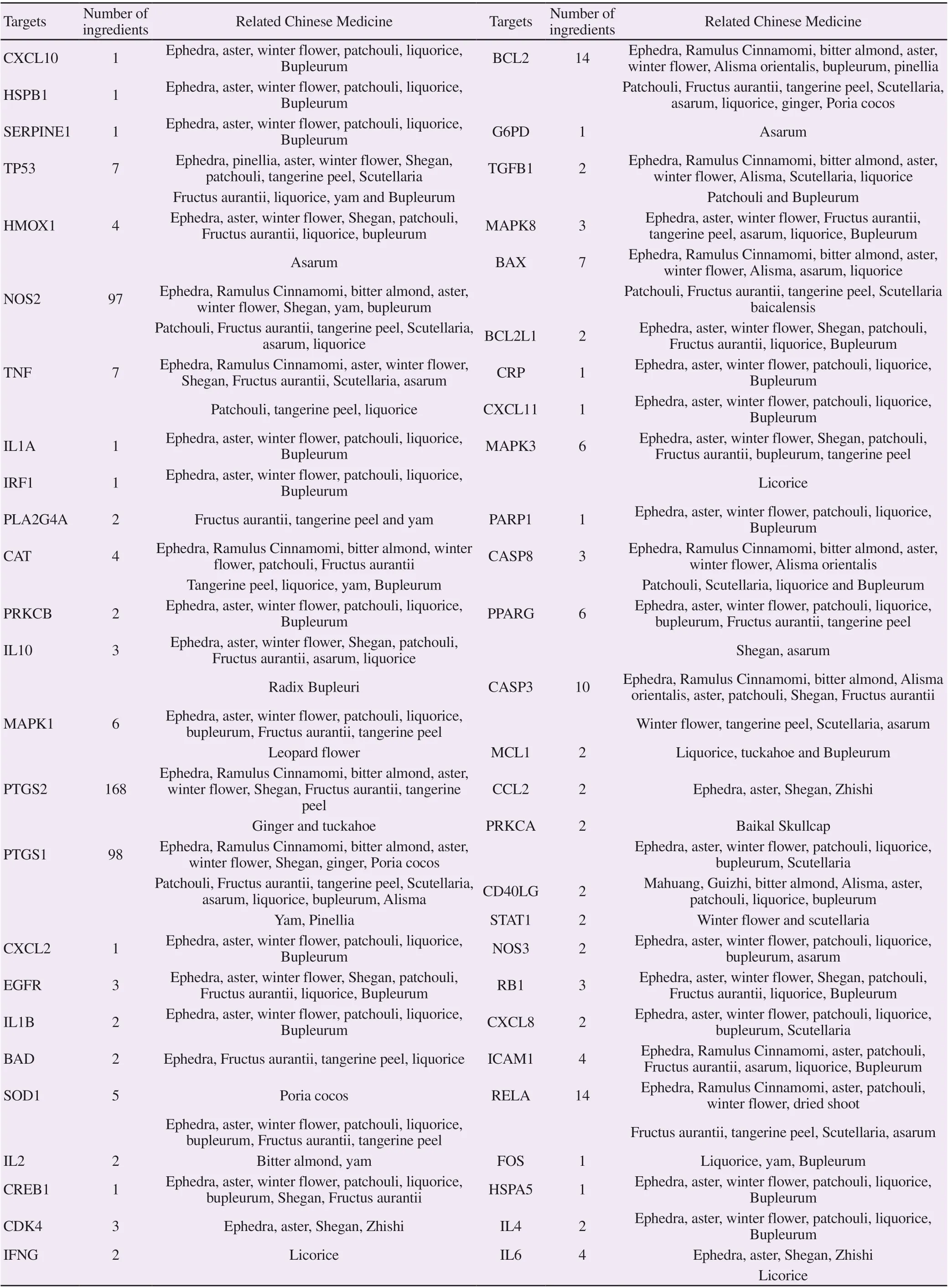
Table 1 Basic information of QFPDT target for COVID-19
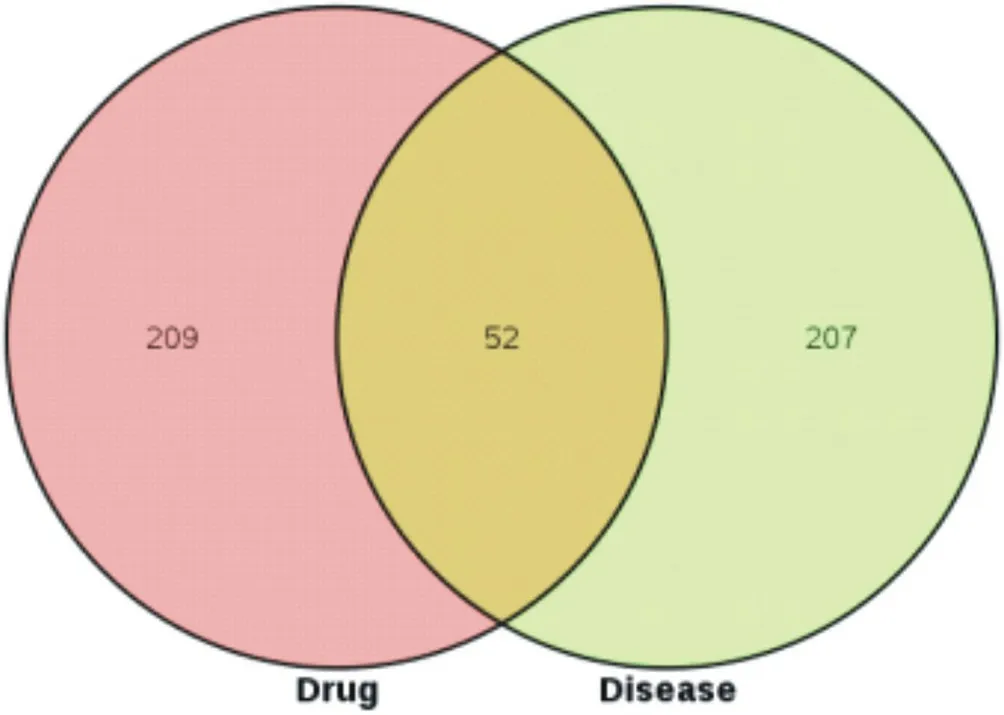
Figure 1 Venn diagram of QFPDT and COVID-19 targets
3.2 PPI network, core components and targets
Using STRING database and Cytoscape-3.7.2 software to analyze the network topology parameters, it can be seen that the target with a large degree value plays a key role in the network, and the larger the degree value, the larger the node. Screening node degree value> average (15.692) 22 core targets, including 17 core targets related to inflammation, mainly including IL, IFN, TNF and other cytokines and chemokines The specific information of the points is shown in Table 2. There are 26 core components with nodal degree> mean (4.314), and the top 5 are quercetin, luteolin, kaempferol, naringenin and wogonin. The constructed traditional Chinese medicine-active ingredient-target visualization network model is shown in Figure 2. There are 243 nodes and 742 lines, in which red represents traditional Chinese medicine, yellow represents the target, and blue represents the active ingredient of QFPDT.

Table 2 Core target information related to inflammation of COVID-19 treated by QFPDT
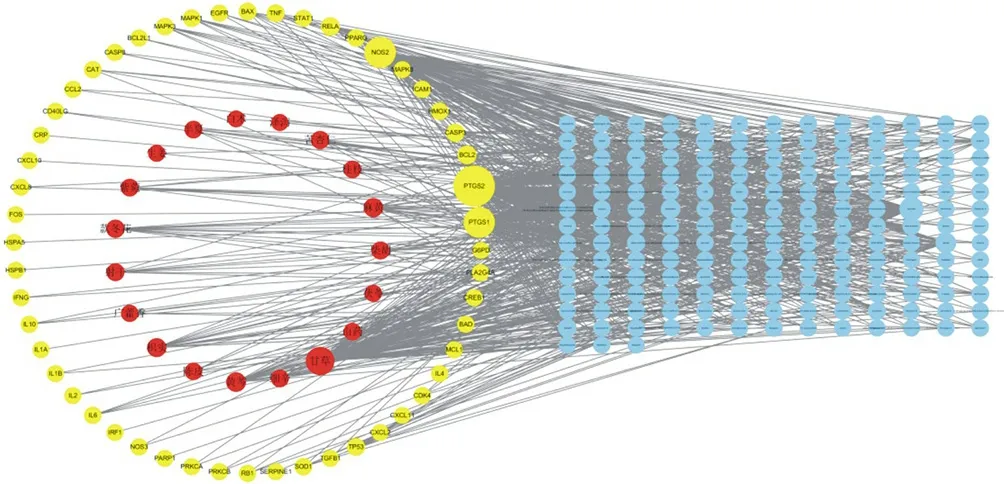
Figure 2 QFPDT treatment of COVID-19 Chinese medicine-active ingredient-target network
3.3 GO enrichment analysis
Under the condition of P <0.01, FDR <0.01, screen the GO enrichment results related to inflammation, of which BP has 224, mainly related to the response to cytokines, the response to lipopolysaccharide, cytokine-mediated signaling pathways, inflammation response Related to immune system regulation. There are 15 MF, mainly related to cytokine activity and receptor binding, chemokine activity and receptor binding, growth factor activity and MAPK kinase activity. And there are 33 CC, mainly related to membrane area, extracellular area, intimal system and vesicles. The GO enrichment results were sorted from small to large according to the P value, and the top 20 BP and CC and the top 10 GO entries of MF were selected to draw a high-level bubble diagram, as shown in figure 3, 4 and 5. The bubble size represents the number of genes enriched in the entry. The larger the bubble, the more genes enriched in the entry.The bubble color represents the P value, and the redder the bubble, the smaller the P value of the item.
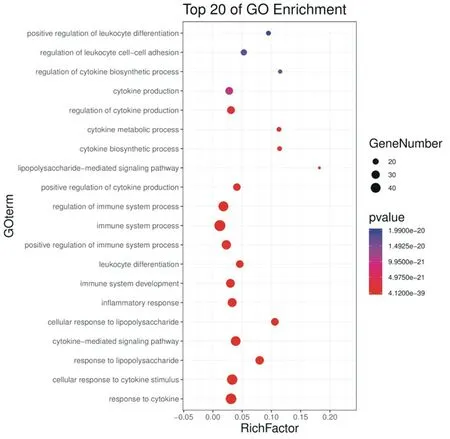
Figure 3 QFPDT treatment COVID-19 GO biological process enrichment bubble chart
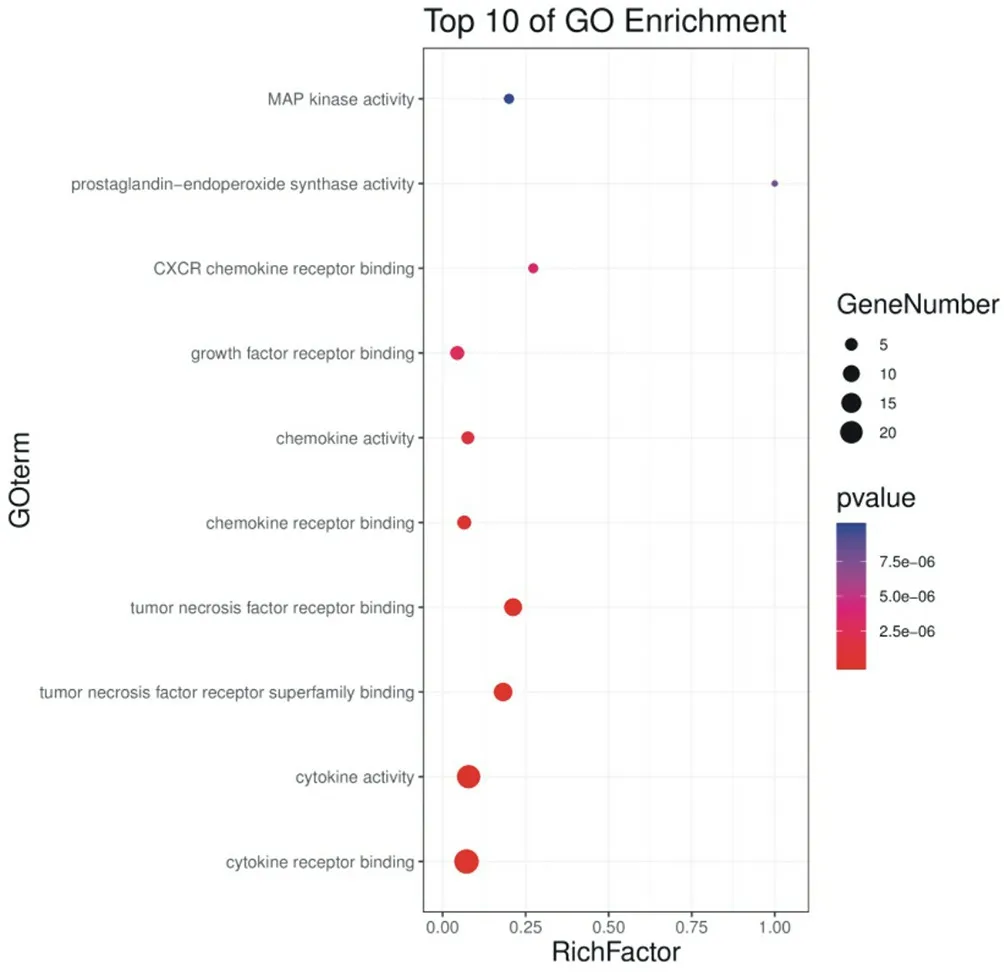
Figure 4 QFPDT treatment COVID-19 GO molecular function enrichment bubble chart
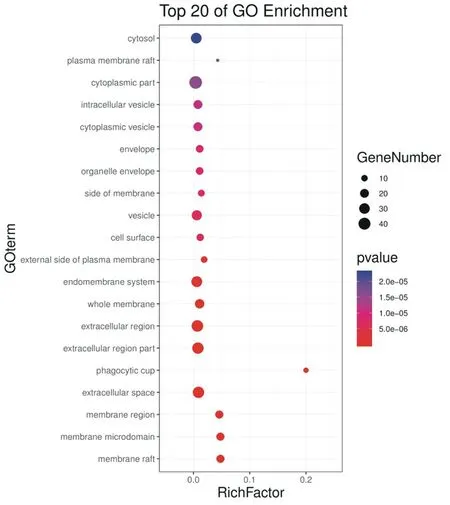
Figure 5 QFPDT treatment COVID-19 GO cell composition enrichment bubble chart
3.4 Enrichment of KEGG pathway
With P <0.01 and FDR <0.01 as conditions, the KEGG pathway related to inflammation was screened, and the enrichment results showed that it was mainly related to TNF signaling pathway, NODlike receptor signaling pathway, Toll Toll-like receptor signaling pathway, MAPK signaling pathway and Cytokine-cytokine receptor interaction are closely related. The enrichment of 52 potential targets on the pathway is shown in Table 3.
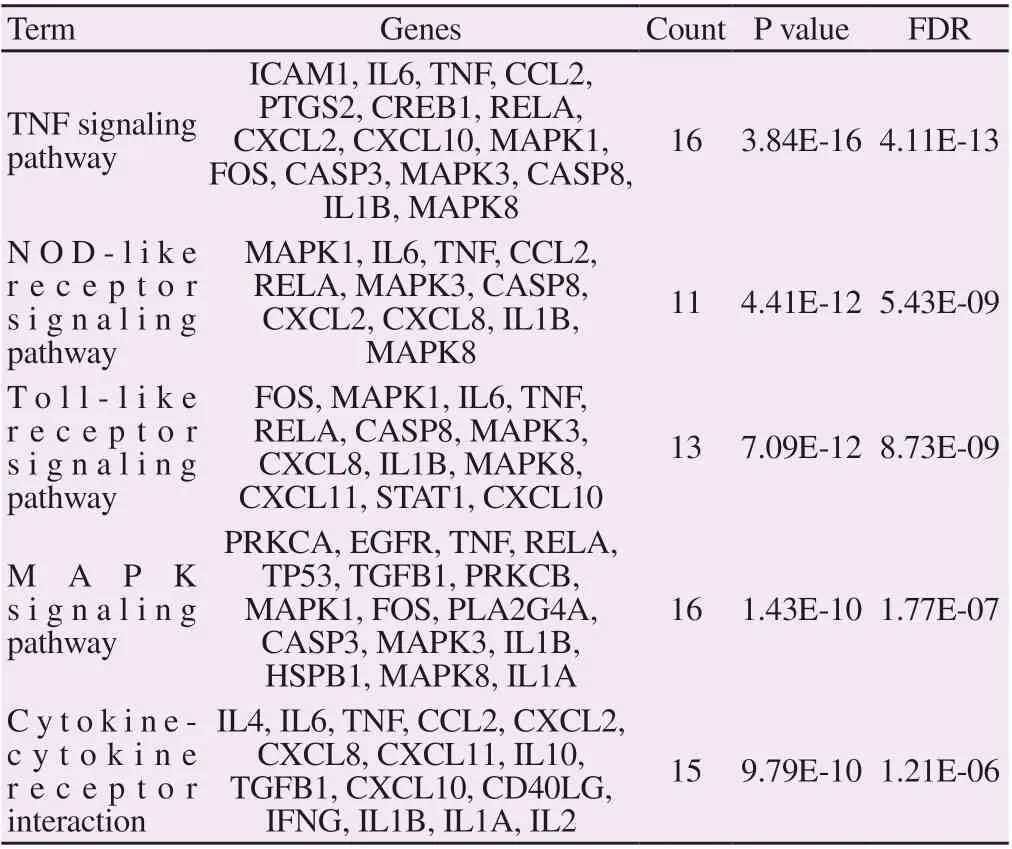
Table 3 QFPDT treatment of COVID-19 target enriched KEGG signaling pathway
4. Discussion
The national "novel coronavirus pneumonia diagnosis and treatment plan (Trial Seventh Edition)" shows that COVID-19 belongs to the category of "epidemic diseases" of TCM, and the disease is due to the feeling of "epidemic resistance". Academician Wang Yongyan and Tong Xiaolin proposed to attribute the disease to "cold damp (plague)"[13-14]. Qingfei Paidu decoction has two effects of warming and colding, which can simultaneously relieve the external cold and internal heat[15-17].
Cytokine storm is an important cause of ARDS and MODS, and it is also an important factor that aggravates the condition of COVID-19 and even leads to death[18]. Cytokines are low molecular weight proteins or polypeptides with wide biological activities secreted by immune cells, including interleukin (IL), interferon (IFN), tumor necrosis factor (TNF), colony stimulating factor (CSF), chemokine and growth factor[19]. After the virus and other pathogens infect the body, they will activate the immune cells in the tissues and organs to secrete a large number of cytokines and chemokines, start the storm of inflammatory factors, then the leukocytes and lymphocytes are collected to the focus, and continue to activate and expand, trying to eliminate the virus by releasing inflammatory mediators[20]. However, excessive inflammatory factors not only recruit more immune cells, but also damage the immune system homeostasis and normal cell function. Therefore, using network pharmacology to explore the possible mechanism of QFPDT to improve the cytokine storm to treat COVID-19, and provide new research ideas for QFPDT to treat COVID-19.
This study screened out 52 potential targets for QFPDT for COVID-19, 17 core targets related to inflammation, mainly including cytokines and chemokines such as IL, IFN, TNF, and 26 core components, including Quercetin (Ephedra, Aster, Coltsfoot, Patchouli, Licorice, Bupleurum), Luteolin (Ephedra, Aster, Shegan, Fructus Aurantii), Kaempferol (Ephedra, Aster, Coltsfoot, Asarum, Asarum , Bupleurum), naringenin (ephedra, citrus aurantium, licorice) and rhubarb scutellariae (scutellaria baicalensis). Studies have shown that both quercetin and luteolin have anti-inflammatory and anti-viral effects, mainly by inhibiting the expression of inflammatory factors to produce anti-inflammatory effects. Quercetin can inhibit the activities of herpes simplex virus type I, poliovirus type I, hepatitis B and C virus, influenza and parainfluenza virus, respiratory syncytial virus and other viruses[21-24]. Luteolin can inhibit the activity of Coxsackie virus and influenza virus[25-26]. Kaempferol has a variety of pharmacological effects such as antiinflammatory, anti-virus, and enhancement of body immunity[27]. García et al. found that both quercetin and kaempferol can inhibit the activation of nuclear factor κB (NF-κB), inhibiting inducible nitric oxide synthase (iN-OS) and epoxidation at the mRNA and protein levels Enzyme 2 (COX-2) and C-reactive protein (CRP) expression to achieve anti-inflammatory effects[28]. Both naringenin and baicalein have anti-inflammatory, anti-oxidant and anti-viral effects. Liu Xin et al. found that in lipopolysaccharide (LPS) -induced murine RAW 264.7 macrophages or BMDMs, naringenin can inhibit the activation of signaling pathways such as NF-κB and mitogenactivated protein kinase (MAPK) , Inhibit the release of TNF-α, IL-6 and other pro-inflammatory factors and mRNA expression, play an anti-inflammatory role[29]. Nakamura N et al. Found that baicalein may inhibit IL-1β-induced retinal pigment epithelial cells IL-6 and IL-8 production and mRNA expression by inhibiting NFκB binding activity[30].
The enrichment analysis of GO biological process is mainly related to the response to cytokines, the response to lipopolysaccharide, the signaling pathway mediated by cytokines, the inflammatory response and the regulation of the immune system. Molecular functions are mainly related to cytokine activity and receptor binding, chemokine activity and receptor binding, growth factor activity and MAPK kinase activity. The results of KEGG pathway enrichment showed that the target was mainly enriched in TNF signaling pathway, nod like receptor signaling pathway, toll like receptor signaling pathway, MAPK signaling pathway and cytokine receptor interaction. TNF-α is the most important cytokine in TNF signaling pathway, which can induce apoptosis and promote inflammation by up regulating MAPK, ERK, NF-κ B and other signaling pathways[31]. Nucleotide binding oligomerization domain (NOD) - like receptor and toll like receptor (TLR) belong to pattern recognition receptors (PRR). Innate immune response mainly recognizes various pathogenic substances through PRR. Since the discovery of nod like receptor, the signal transduction pathway of bacterial invasion has been studied firstly. After bacterial invasion, the signal transduction of nod like signal pathway is mainly related to NF - κ B pathway, MAPK pathway, autophagy pathway, endoplasmic reticulum stress pathway and adaptive immune response pathway, which mediates immune response[32]. Toll like receptor can activate nuclear transcription factor NF KB, mitogen protein kinase (MAPK), p38, IFN inducible factor and other transcription factors by binding TIR domain to adaptor protein, and finally induce target gene expression. Toll like receptor signaling pathway can induce the activation of many rapid responses, such as nitric oxide synthetase, inflammatory cytokines, chemokines and other effector molecules, activate inflammatory response and participate in the body's defense response[33]. MAPK family includes p38 MAPK, JNK and ERK1/2. MAPK signaling pathway is involved in the occurrence and development of a variety of inflammatory diseases, p38 MAPK is the main factor to control the inflammatory response, which is involved in the process of apoptosis, immune regulation and inflammatory response under stress[34].
In summary, the effective components of QFPDT for COVID-19 may be quercetin, luteolin, kaempferol, naringenin, and baicalein. These components act on TNF and NOD by regulating the expression of cytokines Like receptors, Toll-like receptors, MAPK and cytokine receptor signaling pathways, it plays a role in improving cytokine storms, regulating immunity, and thereby treating COVID-19. However, this article is only explained from the perspective of theory and network prediction. In the later period, the core components, targets and pathways must be verified to provide theoretical and experimental basis for later drug development.
杂志排行
Journal of Hainan Medical College的其它文章
- Study on the Potential Mechanism of Drug Pair "Honeysuckle-Astragalus" on COVID-19 based on Network Pharmacology
- Observation on clinical application effect of ankle rehabilitation robot
- Meta-analysis of the relationship between post-stroke depression and the risk of mortality
- Meta-analysis of clinical efficacy of combined traditional Chinese and western medicine in the treatment of granulomatous mastitis
- The effect of plasma uric acid on oxidative stress in ankylosing spondylitis by Keap1-Nrf2 signaling pathway
- LINC01614 expression in gastric cancer and its prognostic value based on bioinformatics analyses
